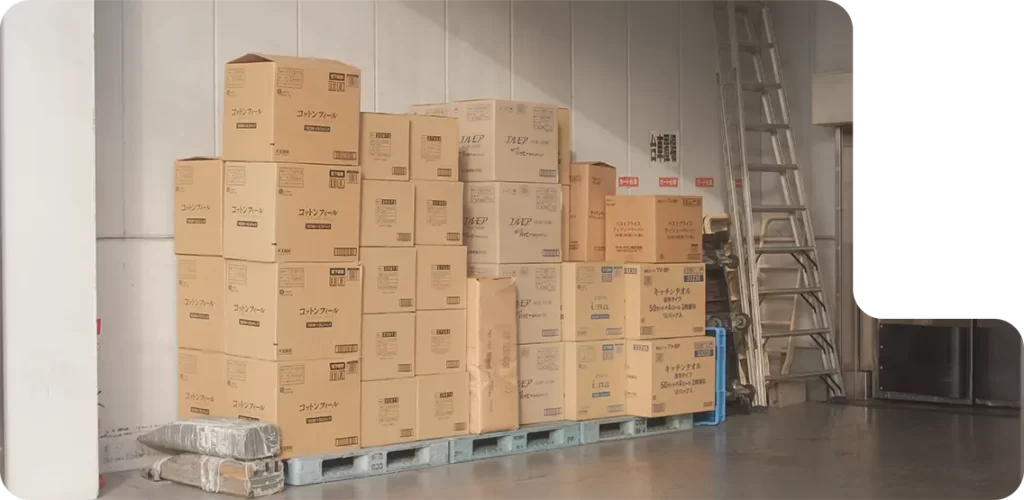Table of Contents
More Inventory Content
Share This
Get the latest e-commerce industry news, best practices, and product updates!
Table of Contents
Share This
More Inventory Content
Get the latest e-commerce industry news, best practices, and product updates!
Also known as speculation inventory, anticipation inventory defines extra raw materials or finished goods you purchase to meet a spike in demand your business might have anticipated. Furthermore, you can also use anticipation inventory as a buffer to hedge against expected shortages of raw materials or other components and hikes in prices.

Anticipation Inventory Explained
Most manufacturing businesses hold several types of inventories, including anticipation inventory to meet expected spikes in demand. For example, anticipation inventory can help your business meet seasonal fluctuations in demand or a shortage of supplies and raw materials and an increase in the cost of supplies.
You can purchase raw materials before the anticipated increase or while the products are still widely available in the market to save money and ensure access to required supplies.
You will need a robust inventory control system to determine how much inventory you need of each type. Furthermore, an effective inventory control system weighs the cost of purchasing inventory and holding it against the risk of lost sales and customer dissatisfaction or production delays due to extremely low inventory levels.
However, if you hold too much anticipation inventory, you run another risk, i.e., the risk of your inventory getting obsolete. If the spike in demand you have anticipated doesn’t hold true, the excess inventory becomes unsalable.
Thus, you can use ERP systems to anticipate demand more accurately and determine how much additional inventory you need to carry.

Anticipation Inventory Vs. Safety Stock
Safety stock and anticipation inventory both form part of inventory management strategies that can help your business easily manage fluctuations in demand and supply. However, anticipation inventory and safety stock differ from each other in some aspects. Your business will generally hold anticipation inventory to meet a predicted increase in demand for products.
On the other hand, you create safety stock for the purpose of safeguarding your business (operations) from unforeseen events, such as supplier-related delays that results in a shortage of raw materials. Furthermore, you create a safety stock to ensure your business does not have to face potential delays in the production schedule.

Why is Anticipation Inventory Necessary?
You need anticipation inventory for your business to safeguard it against stockouts, lost sales, and dissatisfied customers. Furthermore, it also hedges your business against the shortage of vital raw materials or an increase in the cost of supplies.
If you are a manufacturing business that regularly purchases raw materials then you must immediately safeguard against a shortage or even a sudden spike in prices. It can benefit your business in several ways. For example, manufacturing companies that hold anticipated inventories keep their business operations ongoing at a steady capacity. Furthermore, they incur less overtime by boosting production and reducing slow periods.
Uses of anticipation inventory
You can use anticipation inventory in multiple ways. One of the most prominent ways is to use it to prepare for an anticipated increase in demand. Moreover, you can use anticipation inventory in another way that makes it quite essential for your business. You can use anticipation inventory to prepare for potential shortages in raw materials and other materials or sudden increases in prices of raw materials. When you purchase raw materials before there is a surge in their prices, you can save a considerable amount of money to allocate to other business activities.

Advantages of Anticipation Inventory
When you procure and hold a certain amount of anticipation inventory, it can offer several benefits to your business:
- Anticipation inventory can help your business meet projected increases in demand, reducing stockouts, dissatisfied customers, and lost sales.
- Furthermore, if your business creates anticipation inventory before an anticipated increase in demand, you can keep your workers busy during slow times.
- Businesses that create anticipation inventory also incur less overtime and don’t have to add additional staff when the demand increases.
- When raw materials and other components are expected to see a rise in prices, your business can procure anticipation inventory when the costs of supplies are still low.

Disadvantages of Anticipation Inventory
Similar to other approaches, holding anticipation inventory also comes with a fair share of drawbacks:
- It’s often difficult for businesses to anticipate demand and even slight errors can cause severe consequences in terms of money.
- Secondly, if your business ends up purchasing too much inventory than it actually needs, you might have to sell the inventory at a loss.
- When you hold inventory, it costs your business inventory carrying costs. Your business will not only have to pay the cost of procuring inventory but also for handling and carrying it.
- Furthermore, holding inventory shall also involve the costs of moving it, equipment, and workers to manage and control it.
- When your business has money tied up in inventory, it cannot be used for other purposes.
- Lastly, procuring too much anticipation inventory might lead to obsolescence of inventory when the anticipated increase in demand does not come to pass, making your inventory unsellable.
Conclusion
Inventory is a current asset on a company’s balance sheet, and inventory valuation is a vital aspect of any business regardless of size or scope. A company’s inventory valuation method makes a remarkable difference in its financial statements and reflects its overall financial position. This article covers the fundamentals of inventory valuation, including the different methods to calculate inventory value. As a business owner, you must analyze each method and apply that which suits your business needs and accurately reflects your periodic income.
Sign up today and leave the logistics to us
Sign up and we will get back to you within 24 hours to discuss what services would be best for your business needs. Or speak with us now and tell us what you need.
FAQs
Pipeline inventory is the inventory in transit between different locations that form part of a supply chain network, including the manufacturer and distributor. Furthermore, pipeline inventory is also referred to as transit inventory.
Speculative inventory is often used to describe anticipation inventory. It’s the stock your business might hold to fulfill a predicted rise in demand. Furthermore, speculative or anticipation inventory can also protect your business against anticipated surges in the cost of raw materials and other supplies. Most businesses procure raw materials before the prices of raw materials spike, saving businesses a lot of money.
A buffer in the supply chain is another term for describing safety stock. Furthermore, buffer stock is the increase in the amount of stock you have ordered to safeguard your business operations against spoilage, shipping delays, and fluctuations in customer demand.
A good safety stock level is the difference between the maximum daily sales and average daily sales of a product multiplied by the average lead time of the products.
The four primary types of inventory include the following:
- Raw materials
- Work-in-progress (WIP) inventory
- Finished goods
- MRO
Stockouts directly affect sales, tarnishing a brand’s image and reducing customer loyalty. Furthermore, when your customers don’t get what they want and when they want it, they look for an alternative. Thus, safety stock helps your business stay out of these situations.
When you purchase or keep excess inventory as a buffer to reduce and eliminate the risk of fluctuating prices or take advantage of the situation, then your business has created a hedge inventory.